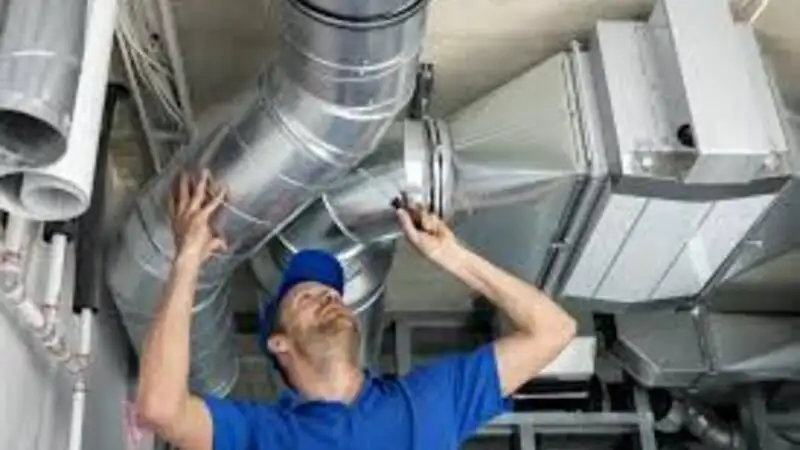A home’s heating and cooling system depends heavily on how air moves through ductwork. When ducts are not properly designed, installed, or maintained, it can lead to wasted energy, uneven temperatures, and higher utility bills. Proper ductwork is not just about moving air; it’s about moving it efficiently, quietly, and effectively. A well-sealed and balanced system can make all the difference in indoor comfort. We will explore how Air Docs takes a focused approach to ensure ductwork not only delivers air but does so in a way that improves performance and reduces energy waste.
Why Duct Design and Sealing Matter More Than You Think
Many homeowners overlook their ductwork, focusing instead on the visible parts of their HVAC systems, like the furnace or air conditioner. Yet ductwork is the circulatory system of indoor climate control. Poorly sealed or improperly sized ducts force heating and cooling systems to work harder, leading to unnecessary energy consumption. Leaks, blockages, or misaligned ducts can cause air to escape into attics or crawl spaces instead of reaching the intended rooms. This means some areas of the home might feel too hot or too cold while others remain comfortable. Such imbalances not only affect comfort but also increase energy bills.
Additionally, the pressure imbalance created by leaks can draw pollutants, dust, or even allergens into the air system, reducing indoor air quality. Companies in Sebastian understand that properly designed and sealed ductwork can recover much of this lost efficiency. Their process starts with a thorough evaluation to locate leaks and assess airflow patterns. Using industry-grade diagnostic tools, they pinpoint problem areas that are invisible to the naked eye. Then, through sealing and adjustments, they ensure that each duct channel delivers air as intended. This focus on foundational performance ensures that even the most efficient HVAC units are not undermined by poor airflow distribution.
Balanced Airflow: The Unsung Hero of Indoor Comfort
Even when systems are well-sealed, poor airflow distribution can still sabotage performance. Balanced airflow means each room in a home or building gets the right amount of conditioned air at the right time. When airflow is unbalanced, some rooms can become pressure traps while others are starved of air. This often results from ducts that are too long, too narrow, or contain unnecessary bends. The length and shape of ductwork play a major role in the efficiency of air travel. The more friction the air encounters, the harder the blower motor has to work, and the less effective the delivery becomes.
By optimizing the path of ductwork and reducing resistance points, professionals ensure that airflow is consistent throughout the structure. Air Docs approaches this with precision, measuring airflow output room by room and reconfiguring ducts when needed. They address not just leaks but also the volume of air moving through each duct. Adjustments such as adding dampers, resizing returns, or re-routing branches of the duct system allow airflow to be finely tuned. This process eliminates temperature swings and helps the system respond more accurately to thermostat commands. The result is not only improved comfort but a more efficient use of energy, as the HVAC system no longer has to overcompensate for poorly performing ducts.
The Link Between Energy Loss and Duct Leakage
Energy efficiency is a priority for many homeowners and building managers, especially as utility costs continue to rise. One of the most significant sources of energy loss in climate-controlled spaces is leaky ductwork. Studies have shown that the average duct system can lose up to 30% of its airflow through holes, cracks, or loose connections. That’s a substantial amount of heated or cooled air wasted before it ever reaches a room. These leaks make the system run longer and harder, wearing out components faster and driving up energy bills.
Air Docs confronts this issue head-on by employing thorough leak detection and sealing methods. Their process doesn’t just involve taping over visible seams; they use pressure testing and airflow monitoring to ensure that leaks are eliminated, not just reduced. Once the system is sealed, the change in energy performance is immediate. Homeowners notice shorter run times for heating and cooling cycles and more consistent indoor temperatures. Over time, this not only saves money but also extends the life of the HVAC equipment. When less energy is needed to maintain comfort, less strain is placed on mechanical parts. It’s a win-win for both energy conservation and equipment longevity.
Improving airflow and preventing energy loss begins with getting ductwork done right. From detecting leaks and balancing airflow to insulating ducts and evaluating system design as a whole, these behind-the-scenes efforts have a direct impact on how efficiently and comfortably an HVAC system performs. We have explored how focused ductwork improvements can eliminate waste, reduce energy use, and create a more even, dependable climate throughout the home. Companies provide thoughtful, targeted solutions that allow HVAC systems to perform to their full potential. In the long run, properly functioning ductwork is not just a hidden convenience—it’s a central pillar of home comfort and energy savings.
